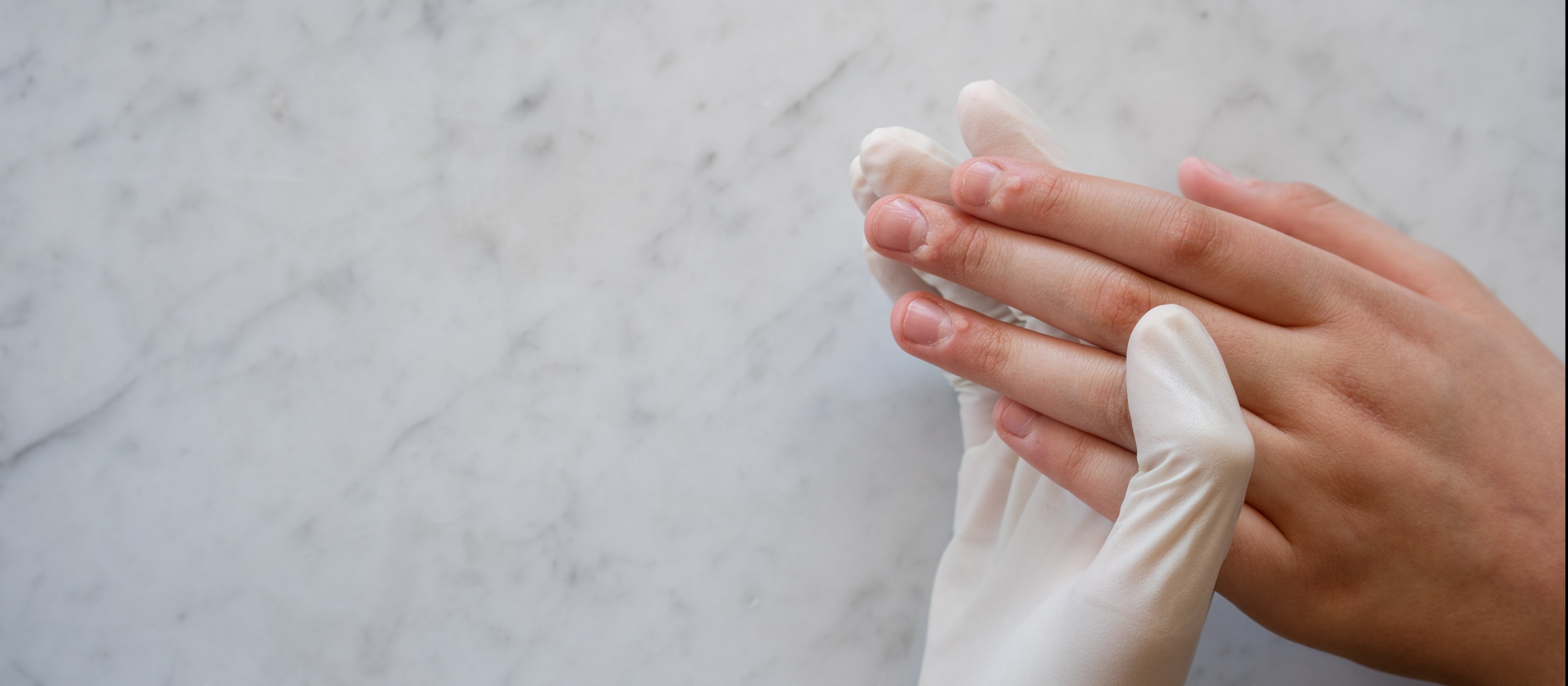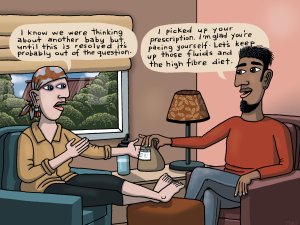Academic pharmacist Nataly Martini highlights the importance of understanding non-Hodgkin lymphoma and pharmacists’ roles in managing this condition
WARTS AND ALL: Prevention and management
WARTS AND ALL: Prevention and management

Non-practising pharmacist Sarah Mooney takes a look at the different kinds of cutaneous warts and how to treat them
We all have varied fond and nightmare-inducing memories of lockdown, and the many personalities and problems it brought out of the woodwork, when pharmacies were one of a select few allowed to open under one of the strictest lockdowns in the world.
One fond memory of mine was my daily conversations with a private practice dermatologist who suddenly found himself flung into being unable by law to run his practice. So, instead, he came to chat to the pharmacy staff about new dermatology treatments he was experimenting with – despite me not entirely having the time to entertain the discussions for too long (like everyone else, we were flat out all of lockdown). Discussing the various preparations and concoctions we could come up with did provide some fun relief (until he put his mountain bike together and reverted to spending lockdown cycling like the rest of the country).
One of our lockdown discussions and mini clinical trials was treating cutaneous warts (he decided to spend some of his downtime treating his daughter’s resistant cutaneous warts) – those benign, annoying growths that can hamper the self-esteem of even the most charismatic individuals, but for which publicly funded treatment is rarely available due to them being a “cosmetic” problem. Thus, what follows is a rundown on what the pesky things are, how they can be managed in community pharmacy and what prescription and surgical treatments are available as a last resort.
A cutaneous wart, also known as a non-genital wart, is a common dermatological condition caused by the human papillomavirus (HPV). It is a benign growth that appears on the skin’s surface, excluding the genital area. Cutaneous warts can develop on various body parts, including the hands, fingers, feet, face and other areas exposed to HPV.
It is important to note that while cutaneous warts are caused by HPV, they are distinct from genital warts, which appear in the genital and anal areas. The strains of HPV that cause cutaneous warts are also different to those that cause genital warts and cervical cancer, although there have been anecdotal reports of patients having a remission of cutaneous warts after receiving an HPV vaccine (dermnetnz.org/topics/viral-wart).
Cutaneous warts are generally harmless and do not cause significant health risks. However, they can be contagious and spread through direct contact or by touching surfaces contaminated with HPV.
These warts typically present as small, raised lesions that can vary in size, shape and colour. They often have a rough texture and may resemble a cauliflower or a solid blister. The appearance of a cutaneous wart depends on the specific type of HPV strain and its location on the body.
The most common types of cutaneous warts include the following:
Common warts (verruca vulgaris) are typically firm, raised growths with a rough surface. They often occur on the knees, backs of fingers and toes, and around the nails. Common warts may have a dome-shaped or irregular shape and can be greyish-brown or flesh coloured. They may appear as a singular growth or in a cluster.
Plantar warts (verruca plantaris) develop on the soles of the feet, especially in weight-bearing areas. They are often flat and have a thickened, callus-like appearance due to the pressure exerted on them. Plantar warts may cause pain or discomfort when walking as they can be pushed inward by the weight of the body.
Flat warts (verruca plana) are smaller and smoother than common warts. They usually have a flat or slightly raised appearance and can occur in larger numbers, often in clusters. Flat warts are commonly found on the face, legs and other areas that are frequently shaved.
Filiform warts are long, slender growths that appear as small, finger-like projections. They usually occur around the mouth, nose or eyelids. Filiform warts can be flesh coloured or slightly darker and may cause irritation or embarrassment due to their location.
Educating patients about the nature of warts, transmission routes and preventive measures is crucial
Proper diagnosis and management of cutaneous warts is essential to alleviate discomfort, prevent transmission, and address any cosmetic or functional concerns associated with these growths. Primary care physicians play a crucial role in diagnosing warts and guiding patients through the various treatment options available:
Observation – in many cases, non-genital warts may resolve spontaneously without treatment, especially in children. Primary care physicians may choose a watch-and-wait approach, especially for small, asymptomatic warts that do not cause significant cosmetic or functional concerns.
Patient education – educating patients about the nature of warts, transmission routes and preventive measures is crucial. To prevent further spread, emphasise the importance of maintaining good personal hygiene, avoiding direct contact with warts, and refraining from picking or scratching them.
Topical therapies – these are often the first-line treatment for non-genital warts. Over-the-counter (OTC) options include salicylic acid preparations, which work by breaking down the thickened skin over the wart. Patients should be advised to apply the medication regularly, following the instructions provided (see panel).
Salicylic acid is the main topical medication for wart treatment and can be prescribed in concentrations up to 60 per cent in white soft paraffin. For those who haven’t had the pleasure of getting an arm workout from compounding this preparation, the key is to add a small amount of glycerol to the salicylic acid before mixing it with the white soft paraffin by geometric dilution. The white soft paraffin can also be softened before use for easier mixing. Be sure to wear a mask while compounding to avoid inhaling the salicylic acid fumes!
Some salicylic acid preparations (eg, Duofilm) also contain lactic acid as an abrasive agent and are suspended in a collodion solution which occludes the wart and suffocates it (some patients use duct tape to create the same effect). Collodion is highly volatile, so it should be used in a well-ventilated space.
Cryotherapy – this involves freezing the warts using liquid nitrogen, leading to tissue necrosis. It is a commonly used treatment modality for non-genital warts and can be performed in a primary care setting. Multiple freeze–thaw cycles may be required for effective results, and patients should be educated about potential side effects, such as pain, blistering and skin pigmentation changes.
OTC wart-freezing treatments are also available for self-treatment at home. These treatments use a cold substance, typically dimethyl ether and propane, to freeze the wart and surrounding skin, causing cell destruction.
Electrosurgery and curettage – for resistant or larger warts, electrosurgery (burning) or curettage (scraping) can be considered. These procedures require specialised skills and should be performed by healthcare professionals experienced in dermatologic procedures. Proper wound care and infection prevention should be followed after the procedure.
Other modalities – other treatment options for non-genital warts include laser therapy, immunotherapy (eg, intralesional injections of Candida antigen) and topical immunomodulators (eg, imiquimod). These modalities are typically reserved for refractory cases or when other treatments have failed.
- Clean the skin thoroughly and scrub with pumice stone (don’t forget to offer a pumice stone with the prescription or retail product).
- Protect healthy skin with a bandage (cut a hole the shape of the wart) or clear nail varnish.
- Apply the product and cover with an occlusive (non-breathable) bandage overnight. Remove in the morning and scrub again with the pumice stone.
- Repeat twice a week until only healthy skin remains.
While rare, certain types of skin cancer, such as squamous cell carcinoma or melanoma, can mimic the appearance of warts
When making a differential diagnosis of cutaneous warts, there are certain red flags or warning signs that should be considered. While most warts are benign and harmless, it is important to be cautious and rule out other potential conditions. Here are some red flags to watch out for:
Rapid growth – if the lesion is rapidly growing or changing in size, it may indicate a more concerning condition than a typical wart.
Atypical appearance – warts typically have a characteristic appearance, but if the lesion deviates significantly from the usual presentation, it may be cause for concern. This includes irregular borders, unusual colours or bleeding.
Pain or itching – warts are usually painless unless they are in an area subjected to pressure or friction. If a lesion is causing significant pain or itching, it may be something other than a common wart.
Persistence or resistance to treatment – warts usually respond to OTC treatments or resolve on their own within a few months. If a lesion persists for an extended period or does not improve despite treatment, further evaluation is warranted.
Location and distribution – warts that appear in unusual locations, such as the palms, soles or genital area, may warrant closer examination as they could be indicative of a different condition. Additionally, widespread or numerous lesions may be associated with immunosuppression or other underlying conditions.
Immunocompromised individuals – in individuals with compromised immune systems, such as those with HIV/AIDS or undergoing immunosuppressive therapy, the risk of atypical or aggressive warts is increased. Close monitoring and evaluation are crucial in these cases.
Suspicion of malignancy – while rare, certain types of skin cancer, such as squamous cell carcinoma or melanoma, can mimic the appearance of warts. If there is a strong suspicion of malignancy based on the lesion’s characteristics, such as rapid growth, ulceration or changes in colour, a prompt referral to a dermatologist is recommended.
Remember, these red flags do not necessarily mean that every wart exhibiting these features is a cause for alarm, but they indicate situations where further investigation or consultation with a healthcare professional is warranted. It is always best to seek medical advice for accurate diagnosis and appropriate management.
Sarah Mooney is a Christchurch pharmacist on the non-practising register pursuing postgraduate studies while raising a young family





